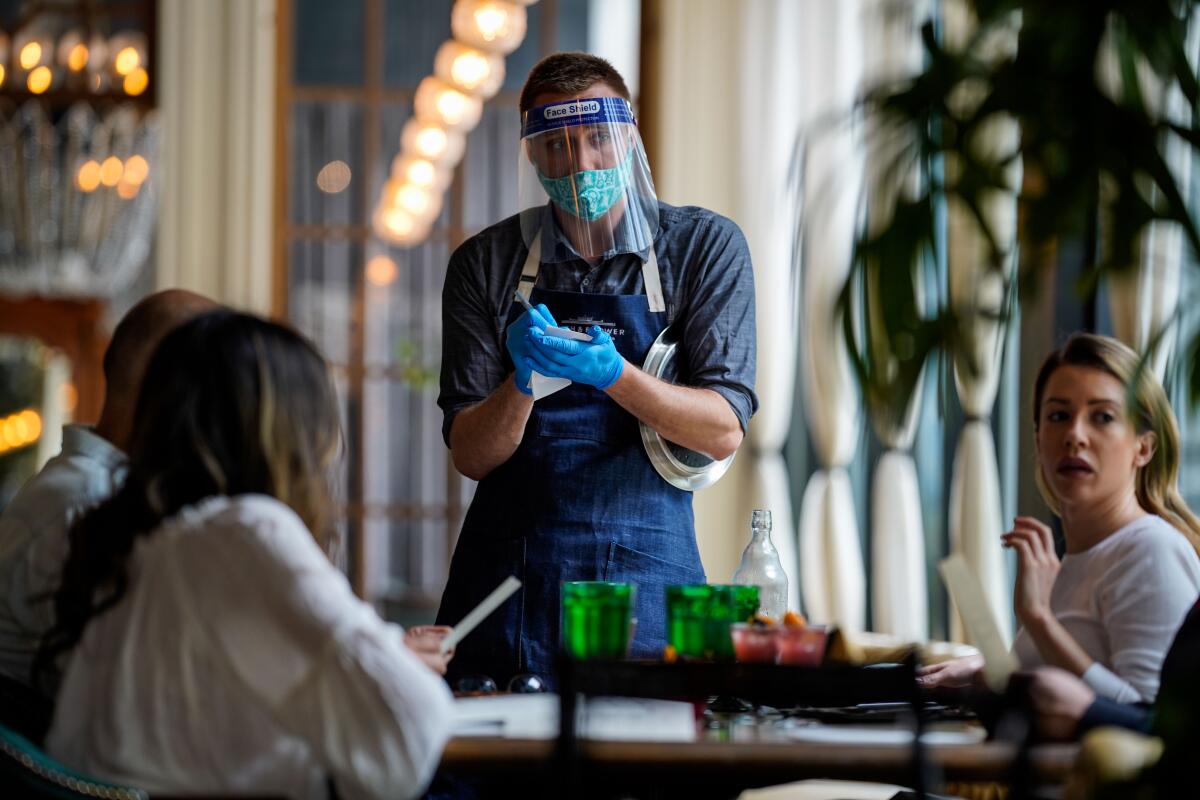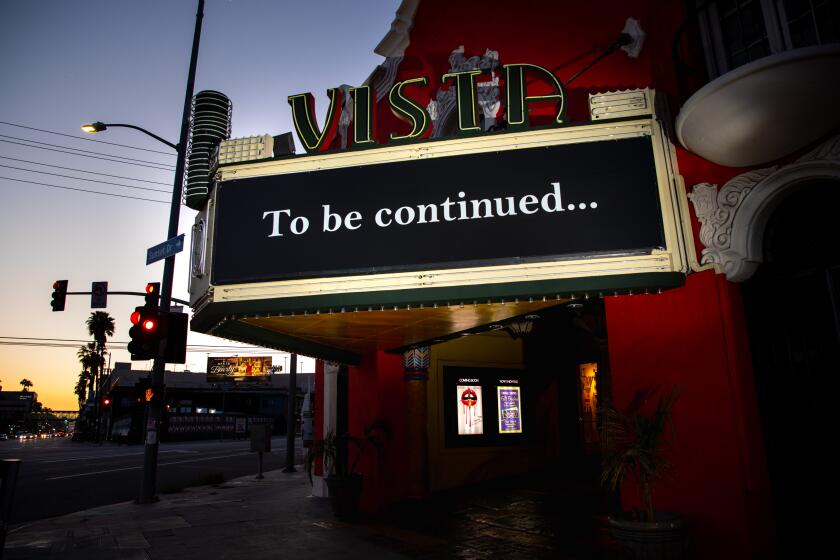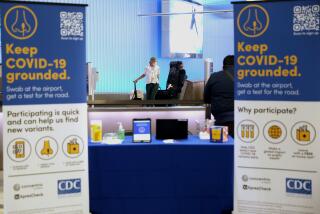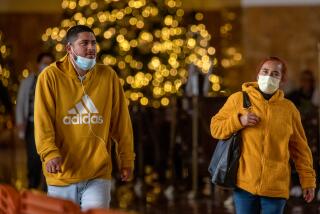A perilous balancing act: Reopening L.A. County as coronavirus still stalks communities

With businesses reopening and people beginning to get back to old routines, Los Angeles County is entering a perilous phase of the fight against the coronavirus: Trying to boost the battered economy without sparking new outbreaks.
One concerning sign is that the coronavirus transmission rate in Los Angeles County â the California epicenter of COVID-19, with more than 2,600 deaths â appears to be climbing again. The increase was reported after the county allowed many retail stores, restaurants and churches to reopen with social distancing rules and as more people left their homes for parks, beaches and hiking trails.
Officials said it will take a few weeks to see if the calculated rate of disease transmission has actually increased, causing hospitals to see more coronavirus patients.
But authorities also say it is still possible to strike the right balance between reopening society and strict safety rules.
âThis is not an impossible task,â Los Angeles County Public Health Director Barbara Ferrer said Monday. âThis is entirely possible: To be able to reopen and do it in a manner that continues to slow the spread. ... Itâs essential that we make progress on our reopening.â
At its worst, the countyâs âeffective transmission rateâ of the coronavirus was quite high â 3 to 3½ â meaning one infected person on average transmitted the virus to an average of 3 or 3½ other people. That high point came in early March before Gov. Gavin Newsom implemented Californiaâs stay-at-home order March 19.
Eventually, the stay-at-home order worked, and the effective transmission rate fell to 1, and then even a bit below 1. That means that, on average, each infected person was transmitting the virus to less than one other person.
But on Friday, Dr. Christina Ghaly, director of health services for L.A. County, said the effective transmission rate had now risen above 1 and was gaining ground.
âIf transmission has indeed increased,â she added, âthen the model predicts that we will have a continued increase in hospital patient volume over the next two to four weeks, and we would anticipate beginning to see that change happen over the coming one to two weeks.â
Weekly coronavirus deaths in L.A. County rose for the first time since mid-April. There were 284 deaths reported for the seven-day period that ended Sunday, up 12% from the previous weekâs tally, 254.
Hospitalizations for COVID-19 in Los Angeles County did not significantly decline last week compared to the previous week. Thatâs the first time that has happened since hospitalizations were at their peak on the last week of April. There were an average of 2,010 hospitalized patients daily last week with confirmed or suspected coronavirus infections, down 0.1% from the previous weekâs daily average of 2,012.
The number of new weekly confirmed cases is down, with 8,849 reported in the seven-day period that ended Sunday compared with 9,967 the week before.
Ghaly said it was possible the number of intensive care beds could become inadequate in the next two to four weeks based on the number of currently available beds in daily surveys among the countyâs public and private hospitals.
âWe must all do everything we can to keep the [transmission rate] from continuing to increase,â Ghaly said.
Los Angeles County has seen a disproportionate share of both coronavirus deaths and cases, which now top 64,000. That represents nearly half of the more than 134,000 cases in California, even though L.A. County is home to just one-quarter of the stateâs population. The coronavirus toll has hit minority communities particularly hard. Black, Latino and Pacific Islander residents of Los Angeles County are now twice as likely to have died from infection by the coronavirus than white residents, officials said.
The latest maps and charts on the spread of COVID-19 in Los Angeles County, including cases, deaths, closures and restrictions.
While officials say the rising death toll is troubling, there are some other optimistic signs about the COVID-19 fight.
Nursing home residents have made up almost half of the coronavirus deaths in Los Angeles County. But the number of new daily deaths among nursing home residents, while still high, has dramatically come down in the last two weeks, Ferrer said Monday.
Ferrer credited the reduction with two changes: ramping up testing of residents and staff, regardless of if they have symptoms, and having everyone in the facility wear appropriate protective personal equipment, like a surgical mask or an N95 respirator, depending on whatâs appropriate.
âThat was a big change ⌠but it also introduced an extra layer of protection, and it has taken a while for us to see the impact of these changes,â Ferrer said.
Last month, The Times reported that L.A. County was struggling to get everyone tested at nursing homes in the county. L.A. County had instructed nursing homes with no cases that they could skip testing staffers and test only 10% of residents weekly.
California health officials subsequently issued new instructions to all skilled nursing facilities to test everyone, a move that overruled the more lax testing policy allowed by Los Angeles County.
The Los Angeles County Board of Supervisors has voted to appoint an independent inspector general to look into the countyâs oversight of nursing homes, including the county health departmentâs slow testing.
L.A. Countyâs case rates are high because there has been a lot of testing in the nationâs most populous county, Ferrer said. She also said the overall rate of positive tests is shrinking in the county â slightly fewer than 8% of people tested for the coronavirus have tested positive, but in the last seven to 14 days, that rate has declined to about 5.5%, she said.
Los Angeles County officials have so far defended their reopening strategy, which has been generally speedier than that of the San Francisco Bay Area.
California counties that have been allowed to accelerate their reopening of their economy could decide to reopen movie theaters as early as Friday, according to new state guidelines released Monday.
Los Angeles County Supervisor Kathryn Barger noted at Mondayâs news conference that L.A. County has been a week behind its nearby counties â San Diego, Orange, Riverside, San Bernardino and Ventura â in managing its reopening.
âMake no mistake: we are doing this in a very deliberate and cautious way, and actually had been one step behind the surrounding counties,â Barger said.
Barger said if the county can reopen in a responsible way â with social distancing and universal wearing of face coverings in public â âwe should.â
âWe need to get back to work and get the economy back working and we can do both. Itâs not an either/or,â Barger said. There are businesses that, if they do not open soon, âthey will not open ever again.â
More openings could come soon. State officials have paved the way for most California counties outside of the Bay Area, including Los Angeles, San Diego, Orange, Riverside, San Bernardino and Ventura, to decide to reopen movie theaters and gyms as early as this Friday.
The latest rise in cases cannot be linked to the thousands who have taken to the streets in the last week to protest the police killing of George Floyd and racial inequality. The incubation period for the virus can be up to 14 days, so numbers currently reported generally reflect actions from previous weeks, officials have said.
Thatâs not to say that activities at the protests wonât affect the case count in the coming days.
Officials have continued to commend peaceful protesters for exercising their 1st Amendment rights while also reminding them to remain cautious.
Ferrer on Monday said the risk of exposure at protests is the same as other crowded settings where there may be people not wearing masks, including indoor malls, restaurants and the beach. In such instances, government disease investigators wonât know that people were in such an environment, which raises the risk of exposure to the highly contagious virus.
âNobody knows you were there,â she said. âNo one will call you.â
Ferrer encouraged protesters Monday to be proactive and get tested in certain circumstances, especially those with underlying medical conditions and those in close contact with a person who later tests positive. She pointed out, however, that it can take up to two weeks for the virus to cause symptoms.
Taking the test too early after exposure could result in a negative result, in which there simply are not enough viral particles in the body to show up, experts say.
âA negative test result doesnât mean you canât become infected during the 14-day incubation period,â Ferrer said.
Those who came into contact with someone who was not wearing a face mask or had a known case of exposure should self-quarantine during the 14-day incubation period.
People should assume that other people in public are infected as they return to work, the beach and the mall, Ferrer said. Federal officials estimate 20% to 50% of people infected with the coronavirus will never show significant symptoms, but may be just as contagious as those who are visibly sick, and thatâs why wearing face coverings and keeping six feet away from others in public is so important.
âThe risk is still there. Even though it may not be a huge risk, itâs enough of a risk for everyone to take these universal precautions,â she said.
Times staff writer Jack Dolan contributed to this report.
More to Read
Sign up for Essential California
The most important California stories and recommendations in your inbox every morning.
You may occasionally receive promotional content from the Los Angeles Times.














